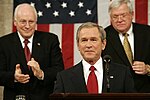The Rescue (sculpture)
1850 sculptures1850s establishments in Washington, D.C.Anti-indigenous racism in the United StatesDestroyed sculpturesMarble sculptures in Washington, D.C. ... and 10 more
Native American-related controversiesOutdoor sculptures in Washington, D.C.Public art in Washington, D.C.Relocated buildings and structures in Washington, D.C.Sculptures by Horatio GreenoughSculptures of Native Americans in Washington, D.C.Sculptures of dogs in the United StatesSculptures of men in Washington, D.C.Sculptures of the Smithsonian InstitutionUnited States Capitol statues

The Rescue (1837–1850) is a large marble sculpture group which was assembled in front of the east façade of the United States Capitol building and exhibited there from 1853 until 1958, when it was removed and never restored. The sculptural ensemble was created by sculptor Horatio Greenough (1805–1852) who had previously been commissioned by the U.S. government to create a massive sculpture, George Washington (1832–1841) for the Capitol rotunda, also now removed from that site.
Excerpt from the Wikipedia article The Rescue (sculpture) (License: CC BY-SA 3.0, Authors, Images).The Rescue (sculpture)
East Front Plaza, Washington
Geographical coordinates (GPS) Address Phone number Website Nearby Places Show on map
Geographical coordinates (GPS)
| Latitude | Longitude |
|---|---|
| N 38.889 ° | E -77.009 ° |
Address
United States Capitol
East Front Plaza
20534 Washington
District of Columbia, United States
Open on Google Maps











